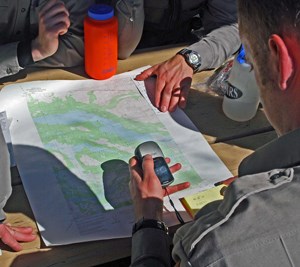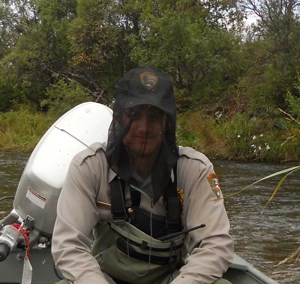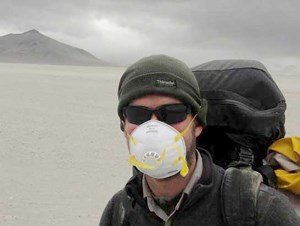|
To have a safer and more enjoyable visit to Katmai, be sure to bring these essential items with you.

NPS/W. Artz Winds, ash, and insects make for some uncomfortable bedfellows. A good three-season tent is a must whether you are in the Valley of Ten Thousand Smokes, out on the Katmai coast, or camping near Crosswind Lake. 2. Bear Resistant Food Container Required for all backcountry travel. Store anything with an odor that might catch a bear's interest inside. 3. Good Rain Gear and Extra ClothingAlways plan for rain at Katmai. Dry, insulating layers are always a welcome sight at the end of a long day. Fleece or wool hats, gloves, socks make the rainy days a little more bearable, and rain gear is excellent for wind protection as well. Dry suits or chest waders are great for rafting trips or for crossing coastal creeks. 4. Map and Compass/GPS Units There are no trails in the Katmai backcountry so route finding is a necessary skill. Maps can be downloaded from the USGS MapStore or purchased from Katmai’s cooperating association, Alaska Geographic. All members of your group need to be familiar with using these items. Keeping the GPS unit charged with a solar panel system is an inexpensive way to assure that you have battery power. 5. Extra Food Backcountry travel in Katmai is all about the weather. Always carry 1-2 days extra food, especially when you are depending on transportation such as airplanes or boats. Weather changes may change your plans. Carry and eat high energy foods to get you through the day. 6. Water and a Water Treatment System Staying hydrated in Katmai's climate is sometimes more easily said than done. Water sources may dry up throughout the summer, so talk with rangers before heading to the field to know where alternative sources of fresh water are. The park recommends that water be treated prior to drinking from a natural source by using one of the following Centers for Disease Control (CDC) treatment methods: 1. Boiling (rolling boil for 1 minute) has a very high effectiveness in killing bacteria, viruses, giardia, and cryptosporidium, or 2. Filtration with an absolute 1-micron filter (NSF Standard 53 or 58 rated "cyst reduction/removal" filter) followed by disinfection with chlorine dioxide (8 drops per gallon) is recommended. Many of the park's rivers carry glacial silt. This silt will quickly clog any water filter and render it inoperable. The addition of a silt stopper device is highly recommended prior to filtration. 7. Camp Stove and Extra Fuel In many places wood is scarce and is difficult to ignite if wet. 8. Appropriate Footwear Most backcountry routes require walking in trailless areas and multiple cold water crossings. Sturdy walking shoes are a must but keep a pair of multisport sandals handy for water crossings. 
NPS

NPS
|
Last updated: August 23, 2023
